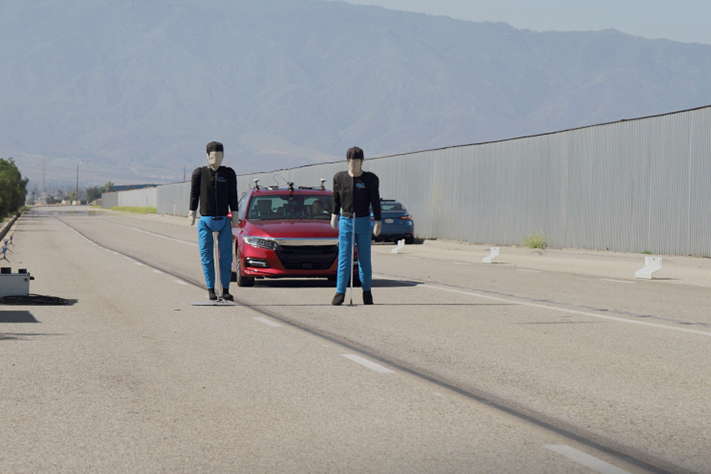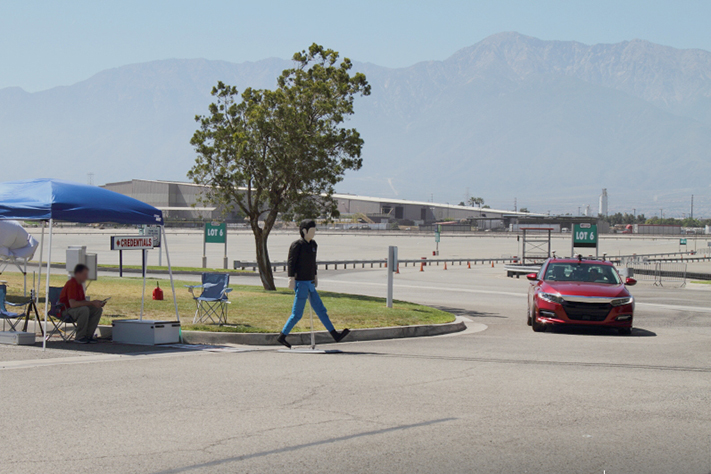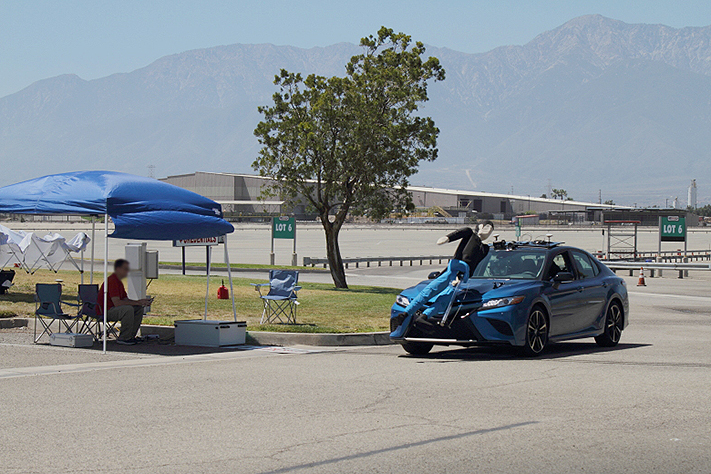
Popular vehicles equipped with autonomous emergency braking and pedestrian detection had 60 percent failure rate when it came stopping in time for adult pedestrians at just 32km/h in broad daylight, according to research revealed in the US.
Children fared even worse, with the American Automobile Association (AAA) testing showing dummy child pedestrians running on to the road being struck 89 percent of the time.

The AAA, in partnership with the Automobile Club of Southern California’s Automotive Research Center, evaluated the autonomous emergency braking (AEB) systems of four popular brands in a Toyota Camry, Honda Accord, Tesla Model 3, and the Chevrolet Malibu whose AEB tech is shared with other GM brands including Holden.
Each car was fitted with a range of cameras and sensors to record information on how the AEB systems detected and responded to suddenly being confronted by a pedestrian, including any warning lights and deceleration.
They were then put through a series of scenarios involving pedestrian-sized dummies designed to move across the road like a person to simulate:
- An adult crossing in front of a vehicle traveling at 20 mph and 30 mph during the day and at 25 mph at night.
- A child darting out from between two parked cars in front of a vehicle traveling at 20 mph and 30 mph.
- A vehicle turning right onto an adjacent road with an adult crossing at the same time.
- Two adults standing along the side of the road with their backs to traffic, with a vehicle approaching at 20 mph and 30 mph.

At 50km/h, most systems failed to avoid a collision with the simulated pedestrian target.
The other scenarios proved to be even more challenging for the systems:
- When encountering a child darting from between two cars, with the vehicle travelling at 32km/h, a collision occurred 89 percent of the time.
- Immediately following a right hand turn, all of the test vehicles collided with the adult pedestrian.
- When approaching two adults standing alongside the road, with the vehicle travelling at 32km/h, a collision occurred 80 percent of the time.
- In general, the systems were ineffective in all scenarios where the vehicle was travelling at 50km/h.
- At night, none of the systems detected or reacted to the adult pedestrian.
It added that automakers are on the right path with the development of these systems, but a lot more needs to be done before they’re effective and consistent enough to be counted upon.

“Pedestrian fatalities are on the rise, proving how important the safety impact of these systems could be when further developed,” said Greg Brannon, AAA’s director of Automotive Engineering and Industry Relations.
“But, our research found that current systems are far from perfect and still require an engaged driver behind the wheel.”
In summarising, the AAA recommends that:
- Drivers never rely on pedestrian detection systems to avoid a collision, and to treat them as a backup rather than a primary means of collision avoidance.
- Drivers should familiarise themselves with proper operation of any ADAS features found within their vehicle as well as any system limitations. This information can be found within the owner’s manual.
- Improved effectiveness in night-time conditions would significantly enhance the functionality of currently available pedestrian detection systems.




